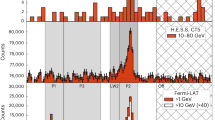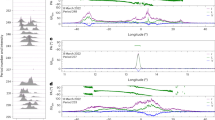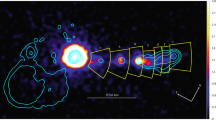Abstract
IN the theory proposed by Chiu et al.1,2 the radio emission from pulsars, which has a brightness temperature3 exceeding 1021 °K, is supposed to be radiation from electrons having kinetic temperatures ∼ 105 °K. This is a surprising suggestion because it is believed that incoherent processes cannot produce brightness temperatures in excess of the effective temperature of the radiating particles. Indeed, the belief that such a limit applies to incoherent synchrotron emission4 led to the dismissal of that mechanism for the pulsar radiation3. Hence it seems that this aspect of the new theory should be examined carefully.
This is a preview of subscription content, access via your institution
Access options
Subscribe to this journal
Receive 51 print issues and online access
$199.00 per year
only $3.90 per issue
Buy this article
- Purchase on SpringerLink
- Instant access to full article PDF
Prices may be subject to local taxes which are calculated during checkout
Similar content being viewed by others
References
Chiu, H.-Y., Canuto, V., and Fassio-Canuto, L., Nature, 221, 529 (1969).
Chiu, H.-Y., and Canuto, V., Phys. Rev. Lett., 22, 415 (1969).
Lyne, A. G., and Smith, F. G., Nature, 218, 124 (1968).
Scheuer, P. A. G., and Williams, P. J. S., Ann. Rev. Astron. Astrophys., 6, 321 (1968).
Wild, J. P., Smerd, S. F., and Weiss, A. A., Ann. Rev. Astron. Astrophys., 1, 291 (1963).
Eidman, V. Ya., Zh. Exp. Teor. Fiz., 34, 131 (1958); ibid., 36, 1335 (1959).
Ginzburg, V. L., and Syrovatskii, S. I., Ann. Rev. Astron. Astrophys., 3, 297 (1965).
Author information
Authors and Affiliations
Rights and permissions
About this article
Cite this article
ROBERTS, J., FAHLMAN, G. Pulsar Theory of Chiu, Canuto and Fassio-Canuto. Nature 222, 862 (1969). https://doi.org/10.1038/222862a0
Received:
Issue date:
DOI: https://doi.org/10.1038/222862a0



